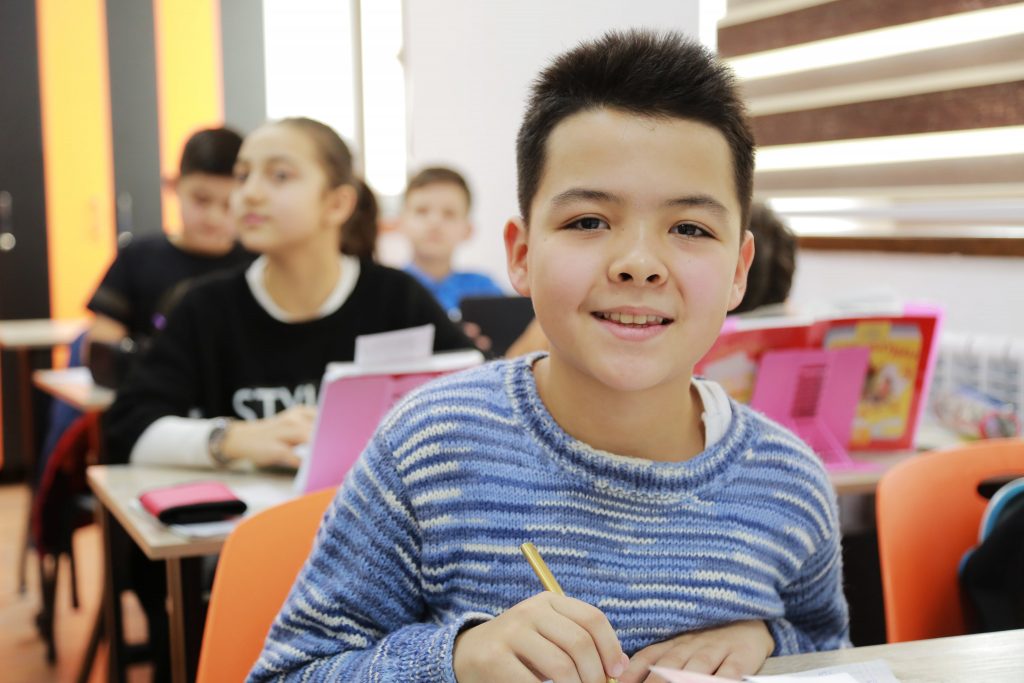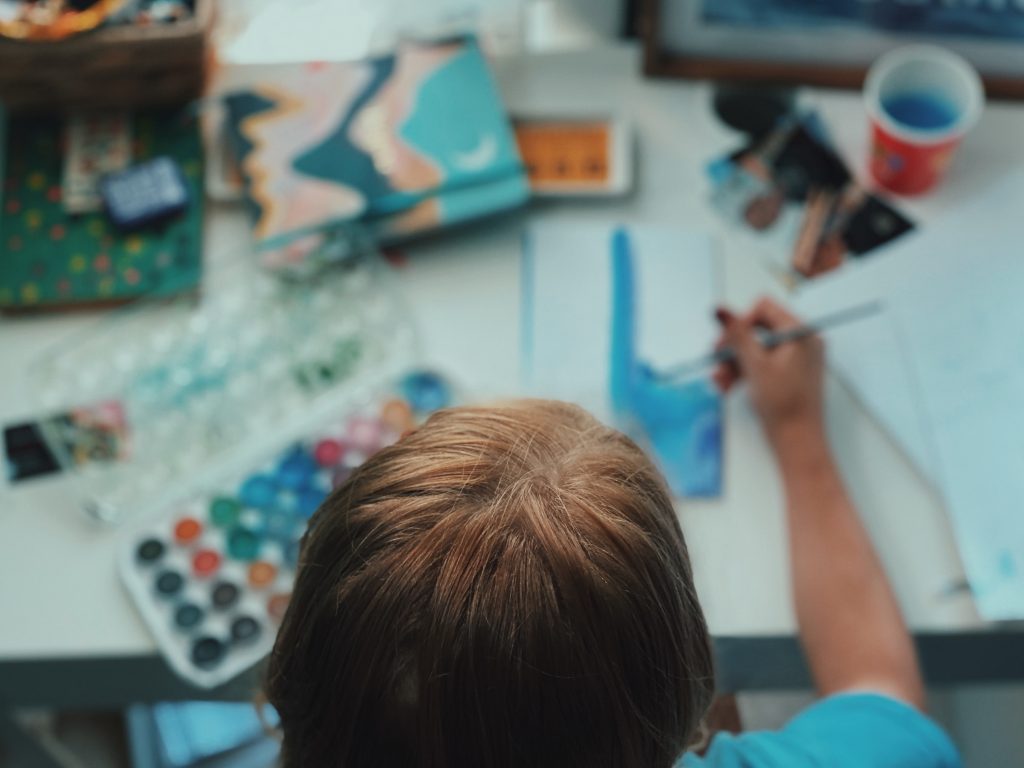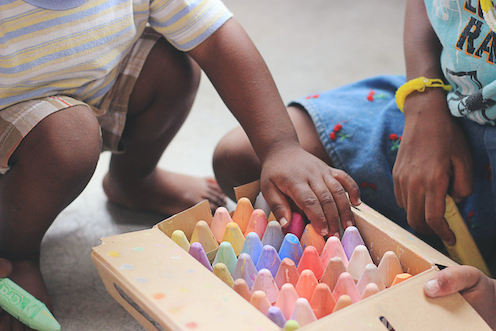An emerging evidence-base for art therapy in primary schools
Following the COVID-19 pandemic, the role schools play in supporting children’s social, emotional and mental health is even more vital. Editors of the International Journal of Art Therapy, Zoe Moula and Alex McDonald review the evidence-base for primary-school-based art therapy…
The indirect impact of Covid-19 through school closures and social isolation measures may have profound short- and long-term effects on children’s wellbeing. Findings from global studies completed between 2020-2021 show that more than 1.5 billion children and young people have been affected worldwide by school closures in 188 countries (UN, 2020). A systematic review investigating the impact of school closures found that 27 studies from 20 countries identified negative impact on children’s emotional, behavioural, restlessness and attention problems. In these studies, 20-60% of all participants scored above risk thresholds for anxiety and depression (Viner, Russell, Saulle et al., 2021).
In the UK, according to the Children’s Commissioner (2021) and Children’s Society (2020), one in five children (1.1 million) feel unhappy with their lives since the Covid-19 crisis. Clinically significant mental health conditions in childhood have increased by 50%, while two thirds of primary school children have experienced social isolation and loneliness; also a 50% increase compared to pre-Covid-19. In addition, although the number of children harmed by domestic abuse rose by at least 30%, the number of children coming to the attention of services has fallen dramatically. Considering the above, it is not surprising that in a recent survey of 2,438 children and young people (Young Minds, 2021), nearly 70% said that the pandemic will have a long-term negative effect on their mental health.
To better understand how children’s heightened mental health needs can be addressed, the Anna Freud Centre (2021) surveyed 3,298 children and young people where 93% said that mental health conversations need to be normalised and brought into schools. The most important identified mental health concerns that children needed to discuss at school were related to depression, anxiety, body image and identity. The Department for Education, Health and Social Care (2018) has also acknowledged the importance of schools in supporting children’s emerging social, emotional and mental health needs.
Schools have been increasingly employing art therapists to support children express and understand their emotions, cope with stress and worries, as well as to develop self-awareness and self-esteem (Karkou, 2010; Moula et al., 2020). The latest workforce survey conducted by the British Association of Art Therapists (BAAT) (2019) showed that 68% of members (n=630) were working with children and young people, with 35% based in school-based settings.

Review of existing evidence
In 2019, a systematic review of systematic reviews of school-based health services was conducted by World Health Organization researchers (Levinson et al., 2019), which included one review of primary-school-based art therapy (McDonald & Drey, 2018). Arts therapies interventions were found to indicate positive outcomes for a range of conditions and difficulties, such as autism (Gold et al., 2006); classroom behaviour problems (Rosal, 1993); oppositional defiant disorder (Khadar et al., 2013a); and separation anxiety disorder (Khadar et al., 2013b). However, caution was recommended when interpreting findings due to small sample sizes, with the largest study having 109 participants including control groups, and disparate therapeutic approaches making it difficult to compare findings (Levinson et al., 2019). Positive outcomes were also reported in relation to trauma-related symptoms in refugee and war-traumatised children, following social-emotional interventions (including arts therapies) (Sullivan & Simonson, 2016).
Two further systematic reviews have examined the effectiveness of art therapy for children, finding positive outcomes and no negative effects for: quality of life (Moula, 2020); self-esteem and social difficulties (Cohen-Yatziv & Regev, 2019); anxiety and emotional difficulties (Moula, 2020); behavioural difficulties (Cohen-Yatziv & Regev, 2019; Moula, 2020). However, again evidence was limited by the small number of studies and sample sizes, disparate approaches making it difficult to compare findings.
Qualitative research with children, parents and teachers has found that school-based art therapy was reported as helping children explain feelings and emotions more easily (Deboys et al., 2017) while sessions are also enjoyable (Deboys et al., 2017; McDonald et al., 2019; McDonald & Holttum, 2020). Children who engage with art therapy were perceived as happier, more settled, calmer, having fewer behavioural outbursts, more confident, and engaging better with schoolwork (Deboys et al., 2017; McDonald et al., 2019; McDonald & Holttum, 2020). Despite some difficulties with implementing art therapy in schools (e.g. lack of privacy, equipment, financial constraints), a qualitative meta-analysis of art therapy in the Israeli education system (Snir et al., 2018) found that the art therapists’ ability to work within the school system emerged as a major advantage for the collaboration between all parties involved in children’s lives (e.g. educational staff and family). Teachers expressed that school-based art therapy allowed for a more comprehensive support system for therapeutic goals outside the therapy room, and children felt that the school as a whole was more supportive. In addition, school-based art therapy improved accessibility for children from low socioeconomic backgrounds, and children whose parents find it difficult to initiate therapy. Attending art therapy at schools, as opposed to hospitals and mental health clinics, was also found to reduce the stigma surrounding the need for therapy (Snir et al., 2018).
Research on primary-school-based art therapy around the world
The following articles describe some of the art therapy services delivered in varying school contexts around the world.
Art therapy to increase positive outcomes for children experiencing social, emotional, and mental health difficulties:
Art therapy for children who have experienced traumatic events, such as migration and natural disasters:
Art therapy practices that support autistic children:
Art therapy practices that help to address health-related problems:
Art therapy practice that improves engagement with classroom learning:
Zoe Moula, Deputy Editor of International Journal of Art Therapy (IJAT)
Alex McDonald, Editor-in-Chief of IJAT
You may also be interested to read the IJAT special issue on art therapy with children
References: Art therapy in primary schools

